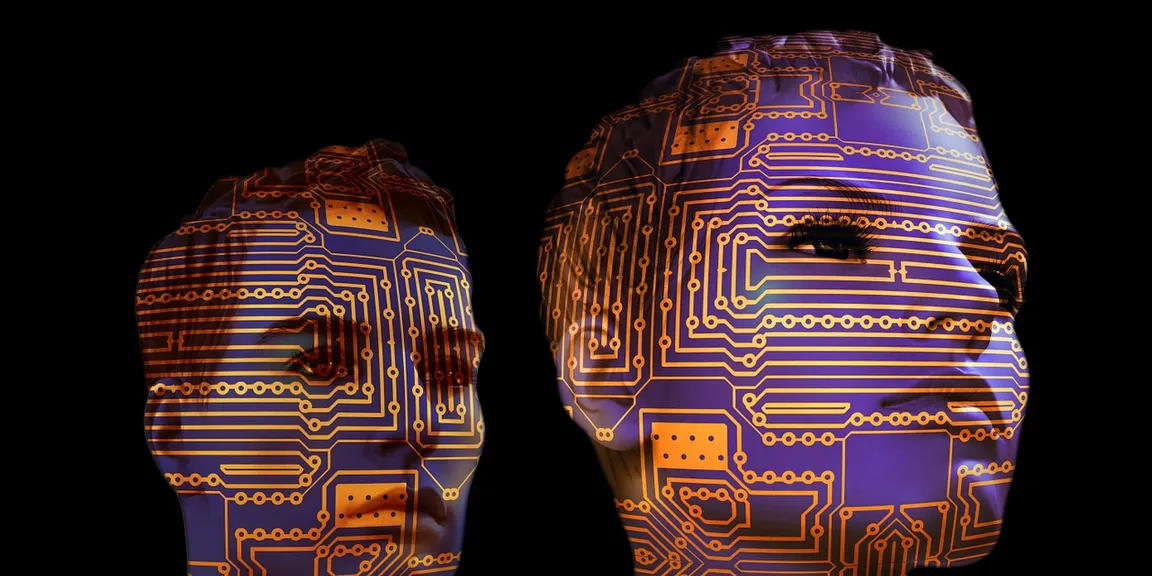

Making sense of China's quest for AI supremacy
Somewhere in the middle of 2017, China unveiled its ambitious plans based on Artificial Intelligence. The plan has made everyone sit up and take notice, even as some serious questions emerge.

When China disclosed to the world its plans for Artificial Intelligence (AI) over a year back, one thing was certain even before people read the fine print: In China, AI was going to be large-scale.
What most didn't realize until after they had read and re-read the documentation was that the plan was not just large-scale, it was all encompassing. In one single document, China had let the whole world know its designs to dominate AI globally.
Being candid isn't China's greatest strength, so the relative transparency was a huge surprise as well.
This post talks about the first of the three stages of China's AI action plan as well as its focus areas and raises some questions.
Highlights of China's 3-year AI action plan Stage 1
Created by: Ministry of Industry and Information Technology (MIIT), China
Goals that China has set for AI:
- Promote development of a new generation AI industry
- Improve the public support system
- Speed up and raise the level of intelligent manufacturing
- Leverage AI to develop intelligent products
- Impact positively, and hugely, industries like healthcare and transportation
Steps China will go through to achieve its AI goals:
- Understand AI trends
- Use top-level strategy
- Deploy technology
- Implement the plan phase-wise
- Build AI industry system
Further details, an infographic and a quick video are available here.
The 4 tasks of China’s AI Action Plan
The Action Plan has identified four tasks (Source) with which to achieve its dream of global dominance in Artificial Intelligence. Here is a brief summary of the tasks:
- Develop seven specific technologies. This includes smart image recognition, intelligent unmanned aerial vehicles, service robots and so on.
- Build the foundation for the development of AI. This covers developing hardware and software for neural network chips, open source platforms and so on.
- Encourage and practice intelligent manufacturing. This task focuses on growing the innovation capability to take manufacturing to the next level.
- Put in place a public support system. This will facilitate the environment for AI, intellectual property rights, cybersecurity, industry training, testing and so on.
The 7 focus areas of China's AI plans
Video image with facial recognition:
Target: Make face recognition reliable; 97% accuracy by 2020.
Challenge: Racial Diversity. While the AI may do very well with the local Chinese population that’s almost exclusively Mongoloid, its performance with faces of Caucasian or Negroid origin is uncertain.
Solution: Africa. China has made huge investments in the African continent. As a payback, African governments could permit China to train its AI cameras in Africa and build diversity in facial recognition.
Intelligent Connected Vehicles (ICV)
Target: Develop technology for connected as well as for auto-driven vehicles
Challenge: Decision making in complex surroundings (traffic, obstructions etc) that can’t always be boiled down to math formula is yet not perfected.
Solution: Proceed in 2 phases In the 1st phase by 2020, cover driver-assistance and low-level automated driving; in the 2nd phase, cover high-level automated driving by 2025. Source
Intelligent Service Robots
Target: Develop multi-purpose robots that can serve in areas as diverse as house-cleaning to teaching to disaster relief
Challenge: As with ICV, robots making decisions after assimilating all information is the single biggest challenge.
Solution: Private sector manufacturers of medical robots in China, like Smarobot, Harbin Boshi Automation, Tinavi, Truking and so on, are working hard to get a foothold. China buys roughly 1 out of every 6 robot (15.9%) sold in the world (Source).
Intelligent Unmanned Aerial Vehicles (UAV, i.e. drones)
Target: 360-degree omni-directional perceptional avoidance and accuracy margin of 0.005 degree.
Challenge: There is a lack of operational standards and GPS-jamming; limitations in avoiding other objects (including other aircrafts)
Solutions: Apart from military, industries like real estate and agriculture are expected to benefit the most from ICV. China has built the world’s largest testing ground for unmanned vehicles.
Computer Aided Medical Imaging Diagnosis Systems
Target: False negatives must be below 1% and detection of common diseases must be more than 95%.
Challenge: Medical facilities are concentrated mostly in urban China.
Solution: Streamline and standardize medical diagnostics. As Steve Dickinson rightly observes, if China can’t have more doctors, they'd rather automate the healthcare system.
Computer Translation
Target: Achieve an accuracy of 85% in translation by 2020
Challenge: Multiple language translation has low accuracy rates
Solution: Machine translation to be fast, reliable and smart, would need to use neural networks. Baidu, one of Chinese government’s blue-eyed boy and an apparent partner in the nation’s AI ambitions, is developing a talking translator well-versed in different languages.
There’s one more area, namely Artificial Audio Intelligence (AAI), for which a target of 96% accuracy in Chinese speech-recognition by 2020 has been set. Further details aren’t available at the moment.
Overall, the plan is to cover 98% of the villages of China under 4G network.
Questions and concerns in connection with China’s AI plans
The scale of China’s AI plan has led to countless debates and raised some serious questions, some of which are listed below.
- AI is all about feeding huge amounts of data to ‘train’ your systems to be smart systems. Given China’s questionable personal and human rights' record, data privacy has emerged as the single biggest concern in the scheme of things.
- Worldwide, AI is seen as more of a job-stealer. Why China, the world’s most populous country, is pursuing something that can reduce rather than increase employment is puzzling.
- Never one to shy away from ruthless hegemony, China’s AI plans could disturb political stability, redefine espionage and, perhaps, rewrite boundaries.
- It is known that your AI systems are only as smart as the quantum of data you feed – something China is full of. The only visible way for Europe and the USA to beat China is to build AI that’s not heavily dependent on big data. Whether this will actually happen remains to be seen.
- Such plans cannot be executed by organizations of any one single country. China, directly and indirectly, has invested in or taken over numerous startups and companies in Europe and the USA. How these governments review policies regarding China’s potential acquisitions, keeping in mind the long-term strategic and security aspects, could change many, many things.
- Chinese authorities have been accused of forced technology transfer or turning a blind eye toward incidents of Chinese companies violating intellectual property rights of companies that are not Chinese by origin. AI being a multi-faceted technology, again raises the same questions of intellectual property rights' violations.
- In absence of a mechanism where the voice of people is duly heard or NGOs and action groups that can check unbridled government activity, there could be many more ethical questions we need to ask but aren’t aware of at this stage.
Other sources:





